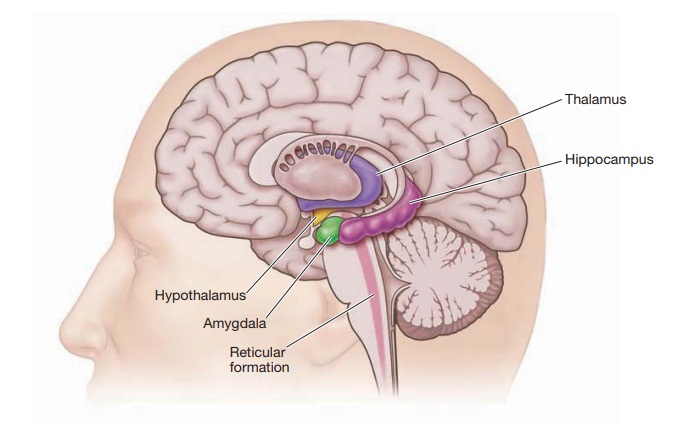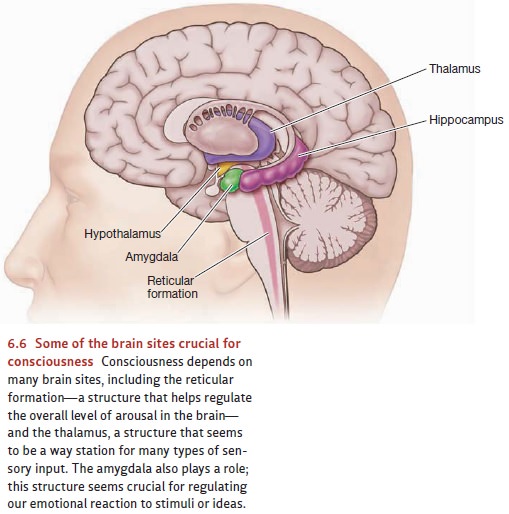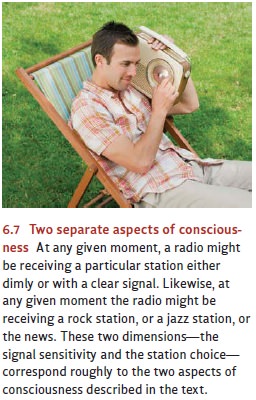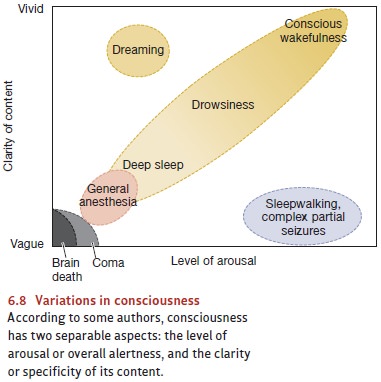Chapter: Psychology: Consciousness
The Many Brain Areas Needed for Consciousness

The Many Brain
Areas Needed for Consciousness
How do we go about exploring the
correspondence between mind and brain, between the mental world and the
physical one? One way is to examine the brain status of people who have
“diminished” states of consciousness—people who are anesthetized or even in
comas. In each case, we can ask: What is different in the brains of these
individuals that might explain why they’re not conscious?
Research on this topic conveys a
simple message: Many different brain areas seem crucial for consciousness, and
so we can’t expect to locate some group of neurons or some place in the brain
that’s the “consciousness center” and functions as if it’s a light bulb that
lights up when we’re conscious and then changes its brightness when our mental
state changes.
In fact, research in this arena
suggests a distinction between two broad categories of brain sites,
corresponding to two aspects of consciousness (Figure 6.6). First, there is

the level of alertness or sensitivity, independent of what the person is alert or sensitive to. We can think of this as the difference between being dimly aware of a stimulus (oran idea, or a memory) and being highly alert and totally focused on that stimulus. This aspect of consciousness is disrupted when someone suffers damage to certain sites in either the thalamus or the reticular activating system in the brain stem—a system that controls the overall arousal level of the forebrain and that also helps control the cycling of sleep and wakefulness (e.g., Koch, 2008).
Second, our
consciousness also varies
in its content.
Sometimes we’re thinking about our
immediate environment; sometimes
we’re thinking about
past events. Sometimes we’re
focused on an immediate task, and sometimes we’re dreaming about the future.
These various contents for consciousness require different brain sites, and so
cortical structures in the visual system are especially active when we’re
consciously aware of sights
in front of
our eyes; cortical structures
in the forebrain
are essential when we’re
thinking about some
stimulus that is
no longer present
in our environment, and so on
(Figure 6.7).


In fact, this broad distinction
between the degree of awareness or sensitivity and the content of
consciousness may be
useful for us
in thinking about
variations in consciousness, as
suggested by Figure 6.8 (after Laureys, 2005; also Koch, 2008). In dreaming,
for example, we are
conscious of a
richly detailed scene, with
its various sights and
sounds and events,
and so there’s
a well-defined content—but
our sensitivity to the
environment is low.
By contrast, in the peculiar state associated with sleepwalking, we’re
sensitive to certain aspects of the
world—so we can, for example, navigate through a complex environment—but we
seem to have no particular thoughts in mind, so the content of our
consciousness is not well defined.
Related Topics